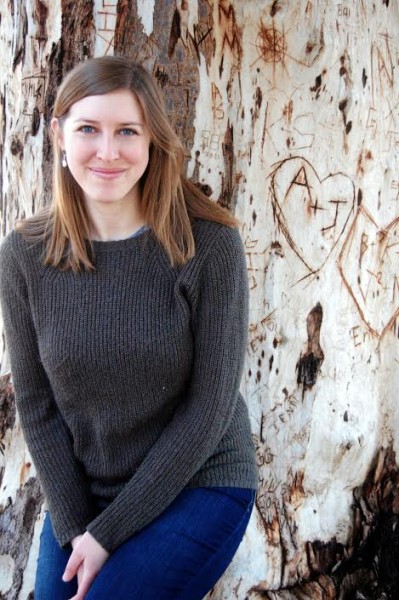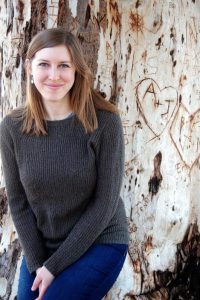
By Dana Diehl
As a kid, one of my favorite pastimes was looking at old photographs of my family. My parents had five photo albums stored at the top of the hallway closet, too heavy for me to get down by myself, with dark covers and no labels. Five albums filled with pictures of me, pictures of my brother, pictures of my parents’ childhoods and their lives together before my brother and I were born. I would sit cross-legged in the hallway, my feet going numb against the hardwood floor, turning the thick pages, satisfied by the flop they made in my lap.
I liked looking at pictures of myself: a fat baby with mosquito-chewed arms and frilly swimsuits, living in a different house, a different state. A version of myself with thoughts and feelings different enough from my current thoughts and feelings that I was looking at both myself and a stranger at the same time.
In the summer, before my family had air conditioning, we’d go into the basement to escape the heat. Sometimes my father would set up his projector and cast faded pictures from his past against the blank wall. Images of himself doing headstands on gray beaches or smiling in a living room, he and his twin wearing matching outfits. There were people I didn’t recognize in some of these photos. People with long hair, sunglasses, and headbands. People on glaciers, at the edges of canyons. One of the slides shows my mom sitting on a lawn chair next to a swamp in Arkansas. She’s pregnant with me. Her glasses are large and round, her hair is curly. She’s partially hidden by narrow trees. In this photo, she’s only three years older than I am now, a version of her I’ll never know.
A photo is full of suggestion. What lies just outside the 4×6-inch frame? The photographer is invisible and yet present in the way they framed their subject. The blurriness or clarity of the image tells us something about who they are, their skill with a camera, their priorities. What fixates me on my family albums are the unanswered questions. The mystery. How did she feel the day this photo was taken? What did she say afterward? When she imagined having children, did she imagine anything like me? The photos offer a glimpse into what feels like an alternate reality. When my dad projected his photos against our basement wall, my brother and I would insert ourselves into his histories by running through the light. We’d add fox shadow puppets to his childhood road trips. We’d stretch our limbs against the wall so that the images warped around our bodies. We became the memories. These images weren’t history; they were fragments where we were free to invent context and intent.
…
My first flash stories were images with no hint at what lay in the blurry corners. Nothing of the shadows.
In the first year of my MFA program at Arizona State University, I struggled to write anything that felt honest, that felt good. I went on long bike rides in heat that made my breath feel cool. I mounted my beach cruiser, the cheapest bike I could find, and pedaled through Papago Park, taking pictures of roadrunners flanking chain-link fences, of palm fronds treading the canal like herons, of skies crisped at the edges by dust storms. I tried to cut out the confusion and instability I was feeling. I even had dreams about taking photos, looking through a square frame, freezing a moment into more specificity than I could ever have in real life, ambiguity washed away in the flash. It felt the way I wanted writing to be. Capturing a moment, containing something beautiful.
Arizona cooled. I had to wear gloves when I biked to class in the evenings. At the end of the semester, my professor, Peter Turchi, gave my class a series of writing prompts. We could choose which prompts to respond to, and because I was running out of time, because my apartment was cold, because I was unsure of so many things, I chose a prompt that seemed easy: Cut a longer story you have down to 700 words.
I took a 17-page story that I’d written in the previous year, a story about a woman who lived in the woods with her children and watched the sky for the space station that housed her astronaut husband. I’d been struggling with the story for months, rearranging its parts, unwilling to part with any piece of it, but in my first desert winter, I cut ruthlessly. I slashed whole paragraphs, whole pages. I kept the only details and scenes that I thought could light up the empty spaces I’d left.
I ended with something that was not quite finished, but close. In the following months, the story would be picked up by Hobart. A writer-friend taught the story to her class. Roxane Gay tweeted the story, which felt (and still feels) like the ultimate accomplishment. I sensed this three-page story was one of the best things I’d written, or the most satisfying thing, and what made it work was what I’d removed.
This wasn’t an epiphany, but it was a step forward. I learned that in good flash fiction, rather than filling space, I had to artfully clear space. The art was in selecting the details that would hint at the whole. Was there a way to evoke at an entire Saguaro by taking a picture of just its base? A way to show a mountain by photographing only its peak? The richest part of a picture is the mystery of what lies beyond the borders.
 Dana Diehl is the author of OUR DREAMS MIGHT ALIGN (Jellyfish Highway Press, 2016). She earned her MFA in Fiction at Arizona State University, where she served as editor-in-chief of Hayden’s Ferry Review. She has taught fiction at Arizona State, Florence Prison in Arizona, and the National University of Singapore. Her work has appeared in SmokeLong Quarterly, North American Review, Passages North, and elsewhere. She currently lives in Tucson.
Dana Diehl is the author of OUR DREAMS MIGHT ALIGN (Jellyfish Highway Press, 2016). She earned her MFA in Fiction at Arizona State University, where she served as editor-in-chief of Hayden’s Ferry Review. She has taught fiction at Arizona State, Florence Prison in Arizona, and the National University of Singapore. Her work has appeared in SmokeLong Quarterly, North American Review, Passages North, and elsewhere. She currently lives in Tucson.

 The core workshop of SmokeLong Fitness is all in writing, so you can take part from anywhere at anytime. We are excited about creating a supportive, consistent and structured environment for flash writers to work on their craft in a community. We are thrilled and proud to say that our workshop participants have won, placed, or been listed in every major flash competition. Community works.
The core workshop of SmokeLong Fitness is all in writing, so you can take part from anywhere at anytime. We are excited about creating a supportive, consistent and structured environment for flash writers to work on their craft in a community. We are thrilled and proud to say that our workshop participants have won, placed, or been listed in every major flash competition. Community works.